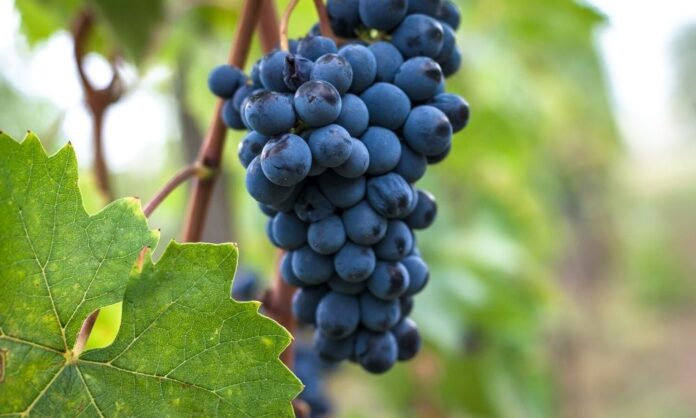
MAIN DIFFUSION AREAS: Italy (Tuscany, Central Italy)
SANGIOVESE: WHAT ARE ITS CHARACTERISTICS?
Sangiovese is the most cultivated red grape variety in Italy, known all over the world for the production of excellences such as Chianti Classico, Brunello di Montalcino and Supertuscan.
“Sour and bitter to eat, but juicy and full of wine”, Sangiovese is the undisputed king of the red wines of central Italy.
Let’s get to know it better, discovering together the origins of the Sangiovese grape, its ampelographic and agronomic characteristics, the organoleptic characteristics of Sangiovese wine, the perfect gastronomic combinations with Sangiovese, the production areas of Sangiovese, the curiosities related to this variety, the iconic bottles And the best quality-price Sangiovese.
- Origin of the name and history of Sangiovese
- Production areas in Italy
- Organoleptic characteristics of Sangiovese wine
- Most famous wines produced with Sangiovese
- Food pairings with Sangiovese
- Curiosities about the Sangiovese grape
- Ampelographic characteristics and agronomic notes of the vine
ORIGIN OF THE NAME AND HISTORY OF THE SANGIOVESE

Where does the name Sangiovese come from? According to an ancient myth, the name Sangiovese derives from the Sanctus Giove, the god of the Romans. Another legend has it that the name derives from Sanguis Jovis, the blood of Jupiter, the name given by the Capuchin monks of a convent on Mount Giove in Santarcangelo di Romagna.
Others argue instead that the name Sangiovese derives from ‘Sangiovannese’, or rather a native of San Giovanni Valdarno, in Tuscany. To you the choice.
It is certain that the Sangiovese grape was already widespread in the Etruscan era, and it is equally certain that it was cultivated in the south: a DNA analysis in fact found that it was born from a spontaneous cross between Ciliegiolo and Calabrese di Montenuovo.
Today it is the most cultivated red grape variety in Italy, in particular in Tuscany, Romagna and Umbria. In the last decade, thanks to the international success that the Supertuscans have had, Sangiovese has also taken hold in overseas wine-growing areas such as in the province of Mendoza in Argentina or in Napa Valley in California.
PRODUCTION AREAS IN ITALY
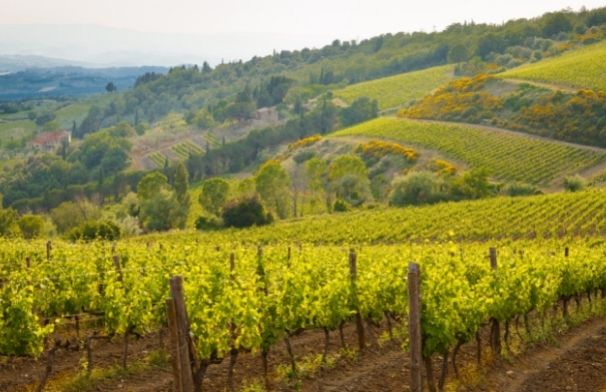
Where is the Sangiovese grape grown in Italy? The elective homeland of Sangiovese is undoubtedly central Italy.
Sangiovese has found the best place to express itself in Tuscany, where it is vinified alone or vinified together with other local or international grapes. In the Tuscan hills, starting from Sangiovese, oenological excellences are produced such as Chianti, Brunello di Montalcino, Nobile di Montepulciano or Morellino di Scansano, but also the famous Supertuscan and excellent IGT wines.
Umbria is also a reality where Sangiovese reaches qualitative peaks with Rosso di Montefalco, Torgiano, Rosso dei Colli Amerini, Colli del Trasimeno and Colli Martani.
Important production of Sangiovese wine is also found in the lands of Romagna, in particular under the denominations Sangiovese di Romagna Superiore and Colli di Faenza.
ORGANOLEPTIC CHARACTERISTICS OF SANGIOVESE WINE
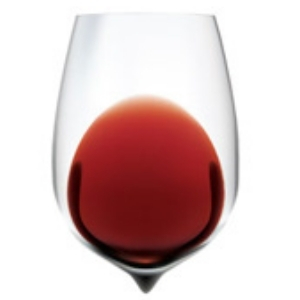
What are the characteristics of Sangiovese wine? Let’s find out together what are the organoleptic characteristics of Sangiovese red wine, from color to aromas and taste.
COLOR OF THE SANGIOVESE WINE: Sangiovese wine has a ruby color characterized by a slight transparency that tends to garnet with aging. Depending on the soil, the climate where it is grown or the possible aging in wood, the color of Sangiovese can be more or less intense.
AROMAS OF SANGIOVESE: to the nose the Sangiovese wine has very recognizable characteristics: floral notes of violet and iris that mix with juicy red fruit (cherry, black cherry, raspberries), but also blood orange, for the recognizable staggering acidity, up to Get to blood, spicy scents of black pepper, or hints of undergrowth, reminiscent of humus, fern, musk and thyme. If aged in wood, more or less marked tertiary notes of vanilla, coffee, tobacco, chocolate or leather will be added, depending on the wood used.
TASTE OF SANGIOVESE: on the palate the Sangiovese wine is enveloping, warm and full-bodied, with a marked acidity and an important tannic structure, which sometimes if unripe can be astringent. It has a rich and greedy drink and a long and intense persistence.
The moderate acidity and good tannic structure make Sangiovese a wine with an extraordinary aging power, particularly suitable for aging in large barrels (the use of barriques, especially if used for the first time, flattens its peculiarities).
Sometimes the varietal impetuousness of tannin and acidity can lead to gustatory imbalances, which is why it is often resorted to blending Sangiovese wine with other varieties capable of softening its character. Sangiovese can be blended with Merlot, Cabernet and Syrah or with native varieties such as Canaiolo, Colorino and Pugnitello.
MOST FAMOUS WINES PRODUCED WITH SANGIOVESE

What are the most famous red wines produced with Sangiovese grapes? Sangiovese has given birth to many famous wines in Italy: the most iconic are Brunello di Montalcino, Chianti and Chianti Classico, Vino Nobile di Montepulciano, Morellino di Scansano, Carmignano, but also many IGT wines of great value such as For example the ‘Pergole Torte’ by Montevertine, the ‘Colore’ by Bibi Graetz, the ‘Flaccianello della Pieve’ by Fontodi, or the ‘Bonsai’ by Podere le Ripi.
Do not miss our selection with tasting of the best 20 Chianti Classico, the best 20 Brunello di Montalcino, the best 20 Morellino di Scansano and the best 20 Nobile di Montepulciano value for money.
GASTRONOMIC PAIRINGS WITH SANGIOVESE
What foods to pair with Sangiovese wine? Sangiovese, especially if in the Riserva version, is a perfect wine to combine with important meat dishes, given its marked acidity and good tannic structure.
The combinations of Sangiovese wine and Pappardelle with wild boar ragout or other meat sauces, stuffed pasta, steak and grilled red meats, game (also feathered), but also well-aged cured meats and cheeses are interesting.
The fresher and more immediate versions of Sangiovese wine can instead accompany fish dishes, for example based on sardines or mackerel, or the typical Romagna piadina. Sensational also the Sangiovese pairing with fish soups, as in the case of Caciucco. Surely Sangiovese is one of the most versatile red wines in combinations with food, depending on the fresher or more structured versions it can adapt to many different types of combinations.
CURIOSITY ABOUT THE SANGIOVESE VINE
Sangiovese is not only used for red wine production. In fact, from the drying of the Sangiovese grapes, a very particular passito wine is obtained: Vin Santo Occhio di Pernice.
Vin Santo Occhio di Pernice is produced in Chianti, Montepulciano, Carmignano and Rufina. The procedure is the same used to make the classic Vin Santo except that instead of white berried grapes, red berried varieties are used, generally Sangiovese with small percentages of Malvasia Nera and Canaiolo.
The name is linked to the color of the wine, which can vary from a very bright amber to a soft ruby red. It has an explosive aromatic framework and an opulent but at the same time very soft and velvety sip, well balanced by a lively fresh trail that tempts you to drink it. It is a meditation wine that shows Sangiovese as you have never seen it before.
AMPELOGRAPHIC CHARACTERISTICS OF THE SANGIOVESE VINE
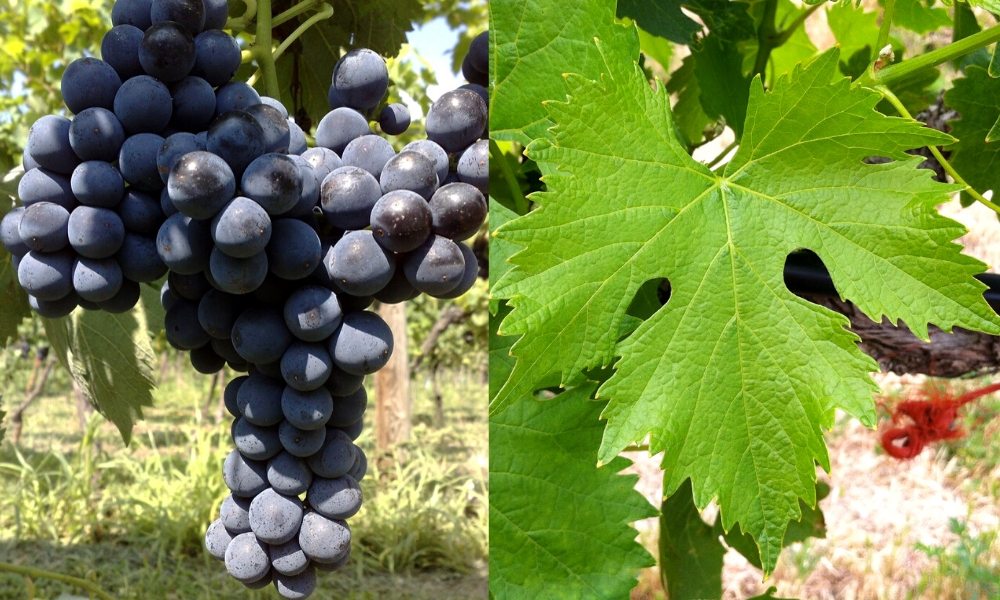
CHARACTERISTICS OF THE LEAF: Sangiovese has a medium-sized, pentagonal, five-lobed or sometimes three-lobed leaf, with a fairly open petiole sinus. Its lobes are marked, the upper page is almost totally hairless, of a more or less bright green color. The ribs are light green and the teeth are pronounced and irregular. The petiole is of medium length, green in color with possible pink shades.
CHARACTERISTICS OF THE BUNCH: the Sangiovese bunch is quite large, cylindrical-pyramidal in shape, compact and generally with a wing. The peduncle is large and visible, semi-woody.
CHARACTERISTICS OF THE BUCKET: the Sangiovese grape has medium-sized, ovoid and uniform berries. The peel is very pruinose and purplish-black in color. The pulp is fleshy and the juice can be slightly pink colored. The Sangiovese grape has an average of two to four seeds, quite large.
AGRONOMIC NOTES OF THE SANGIOVESE VINE
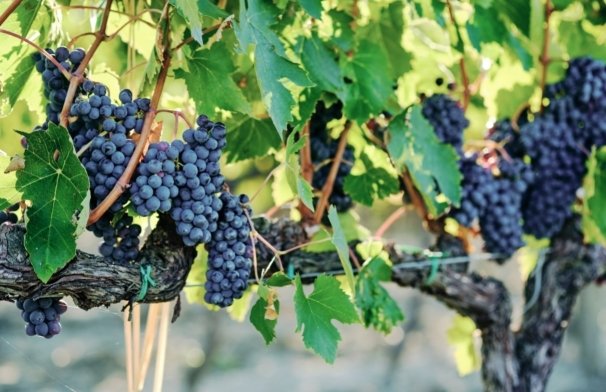
The term Sangiovese actually refers to numerous different clones that have differentiated over the centuries in different territories. The most common Sangiovese clones are Sangiovese Grosso, known as Brunello in Montalcino and Prugnolo Gentile in Montepulciano and Sangiovese Piccolo.
Sangiovese is therefore a versatile vine with a good ability to adapt. It is a late ripening vine, vigorous, with a constant yield and a tendency to very abundant productions: it will be the task of the winemaker to mitigate this productive impetuousness in order not to compromise the quality of the wine.
Sangiovese does not have particular needs as regards the soil but provides the best results in clayey-calcareous soils rich in skeleton; It prefers dry and hot climates and tends to suffer from cold and humid ones, due to the ease of undergoing rot given the discreet compactness of its clusters and the thin skin of the berries.





